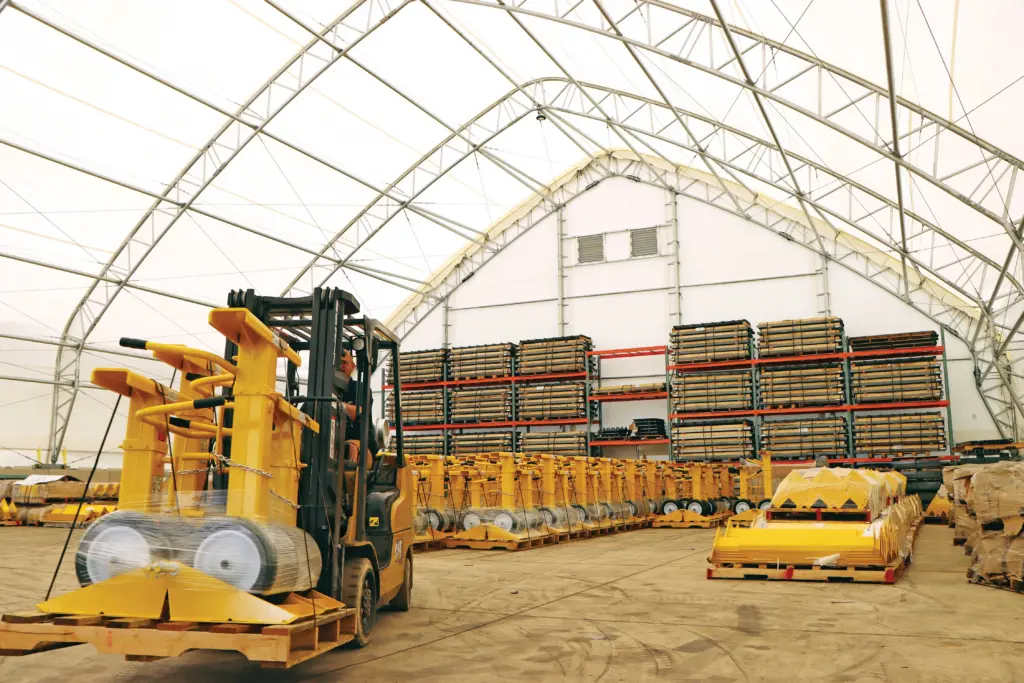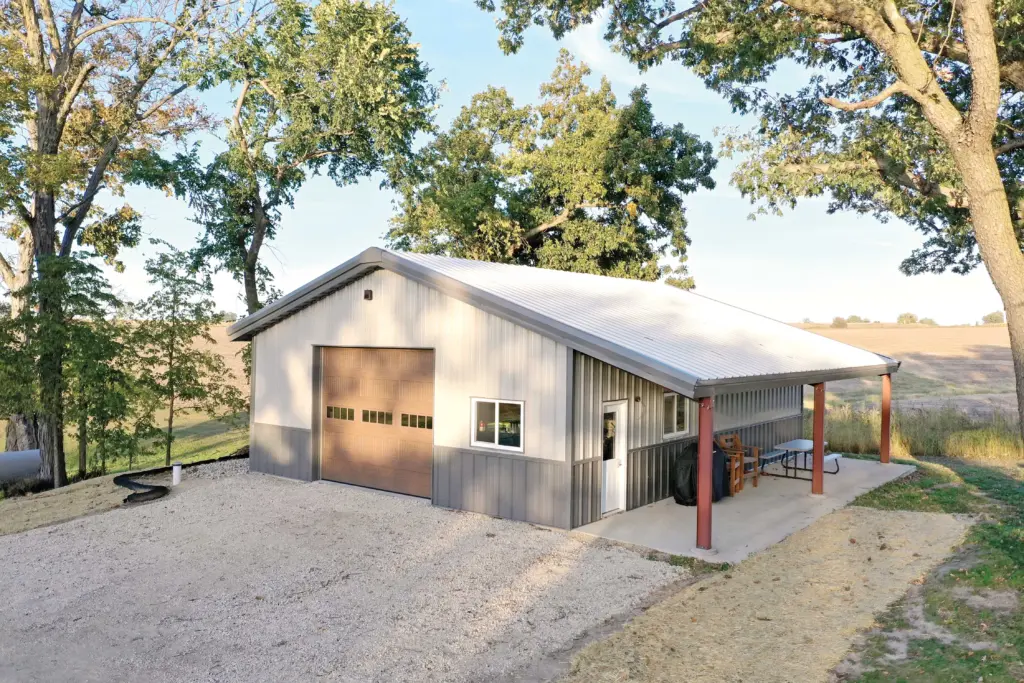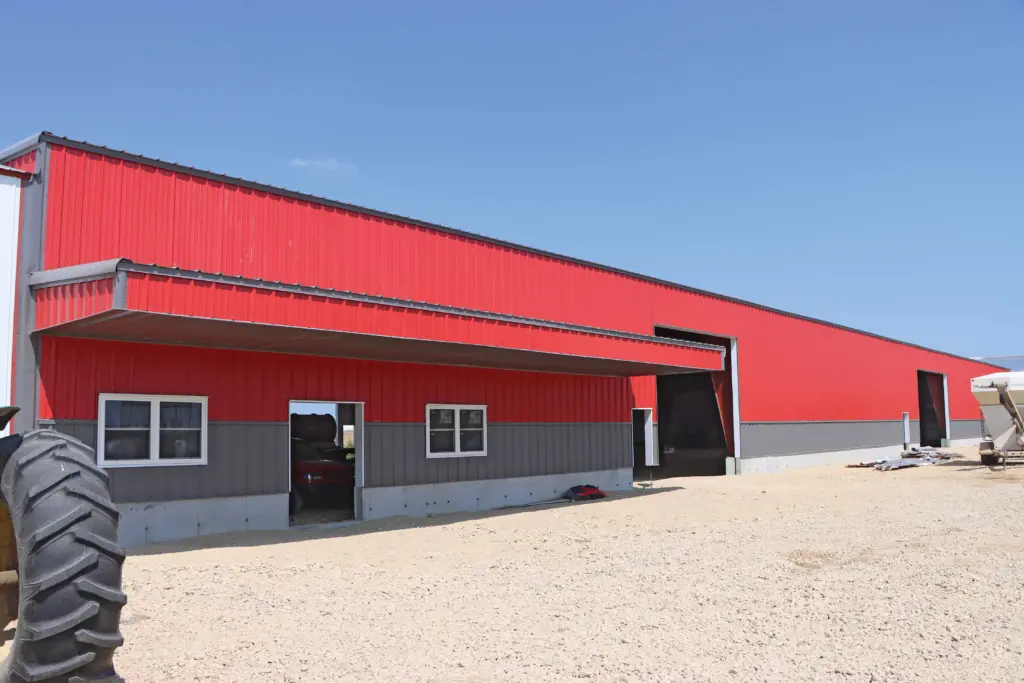The Essential Guide To Choosing Your Building Cladding
Every component has a role to play when designing a new structure. While the framing impacts features like size, shape and weight distribution, building cladding is crucial to a structure’s weather-resistance, thermal insulation and overall functionality.
There are a number of different types of cladding utilized across the commercial building industry, each of which comes with their own distinct benefits. Likewise, every operation is unique, so it’s imperative they complement their frame with the cladding choice best-suited to their individual requirements.
Through this guide, operations can learn more about the various cladding materials available to them, and then use that information to make the best decision for their business. With the right solution, they’ll be able to set themselves up with a structure that not only optimizes day-to-day workflow, but is also dependable and adds superior aesthetic value to their operation.
What Is Cladding In Building Construction?
Cladding is a layer of material that is used to cover the framing of a structure. It protects the building’s interior, shielding it from the elements and providing a degree of thermal insulation, while also enhancing its appearance.
Steel frame structures are generally outfitted with three types of cladding material, including polyethylene fabric, vinyl fabric or metal panels. Metal cladding is separated into exterior walls and roofing systems, which allows operations to mix and match different kinds of panels, depending on their budget and application. Fabric can be incorporated this way as well, but frequently comes as an all-in-one solution that covers the entire building.
See ClearSpan’s Building Cladding In Action
Fabric Building Cladding
Polyethylene Fabric
Polyethylene is a lightweight fabric material known for being naturally translucent, energy-efficient and easy to install. ClearSpan’s polyethylene cladding is a dependable, yet economical 12.5 oz. cover that’s designed with a rip-stop weave, which helps stop tears from occurring and significantly extends its lifespan.
This material is inherently designed to create a more comfortable working environment, since it allows natural sunlight to filter through and produce a well-lit space throughout the day. Poly covers are also climate-sensitive, so they are able to keep a building’s interior naturally cooler in the summer and warmer in the winter.
Businesses who choose this building cladding will benefit from a long-lasting solution that limits their dependency on mechanical ventilation and artificial light fixtures, helping them reduce monthly energy costs and run a more sustainable operation. As an added bonus, ClearSpan’s polyethylene covers are 100 percent recyclable.

Architectural Vinyl
When looking at fabric cladding for buildings, it’s difficult to ignore the heavy-duty design of a vinyl cover. ClearSpan’s 29 oz. architectural vinyl building cladding, dubbed the Armor Shield Cover, is intended to provide steel frame structures with the utmost strength and reliability.
Highlighted by its seven-layer construction, this material has undergone extensive testing to ensure it delivers decades of use. The base fabric supplies necessary strength and supports a long life, while the first coating on each side offers additional thickness and weather-resistance.
A second coating provides another layer of protection on both sides, and then the cover is finished off with two PVDF top coats, which further improve durability and repel dirt. With this design, operations can keep their workers, equipment and stored goods protected in even the most demanding regions. Furthermore, they will still benefit from some of the advantages offered by polyethylene, like climate-sensitivity and a degree of natural lighting.
Sign Up Now To Learn More
Metal Building Cladding
Roofing System
For a roofing system, metal cladding can either come as standard R-panels or be upgraded to standing seam panels. R-panels are one of the most common styles of metal cladding and are used in 1/2:12 pitches and above. They feature ribs 12” on-center (OC) and utilize a through-fastened system, which means they are designed to be fastened with screws going through the peak of their ribs.
ClearSpan’s metal R-panels are constructed from 26 gauge, grade 80 steel and come either painted or in galvalume. Galvalume is a substrate used to prevent rust and oxidation of the panels and prolong their lifespan. It is an effective, yet economical option when aesthetics are not a factor for businesses.
Standing seam panels are classified as a floating panel system. Rather than utilizing fasteners, these panels take advantage of clips and crimping to be secured to the purlins on a roof. This roofing system is typically paired with an R-panel style sidewall and is best for low pitches, ranging from 1/4:12 through 2:12.

The most notable benefit of standing seam panels is that they can provide a superior water seal, as there are no roof penetrations caused by fasteners. They are also able to accommodate thick blankets of insulation, so if operations are looking to maximize their building’s R-value, standing seam panels may offer a sensible building cladding solution for their roof.
Sidewalls
R-panels are one of the most popular choices for a metal building’s sidewall system. Since they are constructed from 26 gauge, grade 80 steel, they are able to easily withstand challenging environments where strong winds and significant weather events are common. Depending on their preferences, operations can also acquire these panels in other channel designs, including AG panel and U panel.
If businesses need greater control over their interior environment, though, they may want to consider insulated metal panels (IMPs) for their wall cladding. IMPs are comprised of insulated foam sandwiched between two exterior 26 gauge or 24 gauge metal panels.
IMPs are incredibly efficient and provide operations with an all-in-one metal building cladding, because besides the frame, the panels are all that is needed. Each panel features an exterior, weather barrier, insulation and vapor barrier, ensuring ultimate protection from the elements and decades of use. These panels can also be utilized for roofing systems, but as sidewalls, they provide a clean appearance and a high R-value that ranges from 14-57.
Some other aspects of sidewall cladding operations should be aware of are the wainscot, interior liner panels and translucent panels. Wainscot is a 3’ by 4’ metal skirt that runs around the bottom perimeter of the structure and generally matches the color of the trim and roof for aesthetic purposes.

Interior liner panels are 29 or 26 gauge panels used on the inside of a structure to cover its girts and insulation, offering additional safety and improved functionality. Translucent panels are R-panels made from polycarbonate that help complement a structure’s exterior cladding, and they are used in place of standard metal R-panels to allow natural light into the building. These function much like a window, without the fragility of glass cladding.
During the design process, it’s crucial for operations to choose a building cladding that will help them get the most potential out of their structure. By understanding the benefits of each cladding material, they’ll have the information they need to make that decision, creating a building that’s tailored to their application and enables them to flourish in their industry.
To learn more about which building cladding is right for your operation, call or Request a Quote today.
Related Articles
Pre-Engineered Steel Buildings Should Be Your NExt Structural Solution
ClearSpan’s pre-engineered steel buildings provide operations with a structure that’s not simply just a quick fix, but that can also be a reliable long-term solution.
4 Types Of Building Construction Materials You'll Encounter In Your Project
When designing a structure, one of the most daunting tasks businesses are faced with is selecting their building construction materials.
Sustainable Fabric Structures: An Eco-Friendly, Energy-Efficient Fabric Building
While the building industry as a whole has not been the most eco-friendly in the past, sustainable practices are becoming more commonplace in an effort to promote change.
Everything You Need To Know About Insulated Steel Buildings
By referencing this guide, businesses can learn more about the benefits offered by insulated steel buildings, and then determine the type of insulating material that is best suited to their needs.

